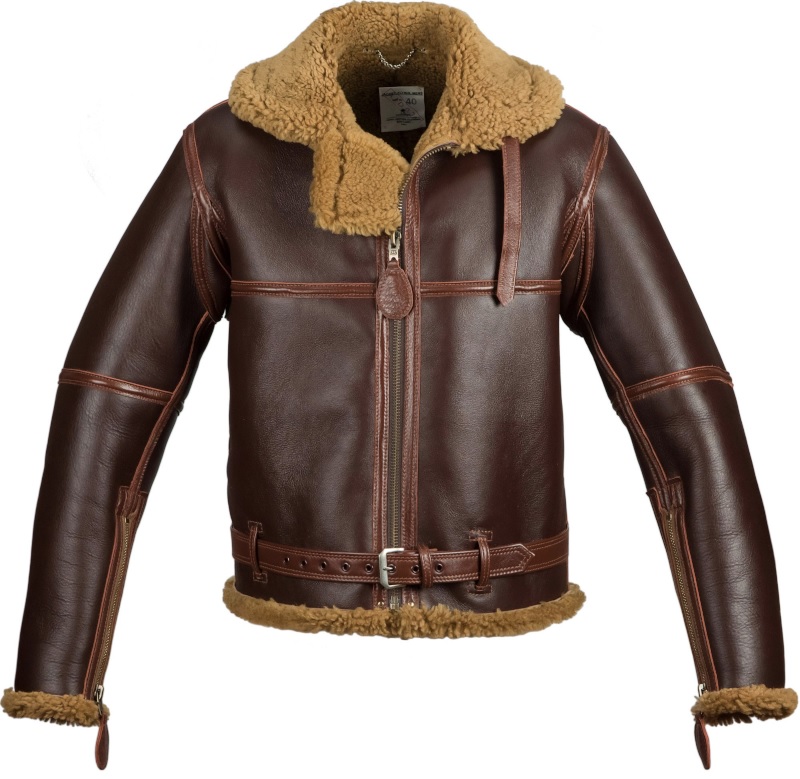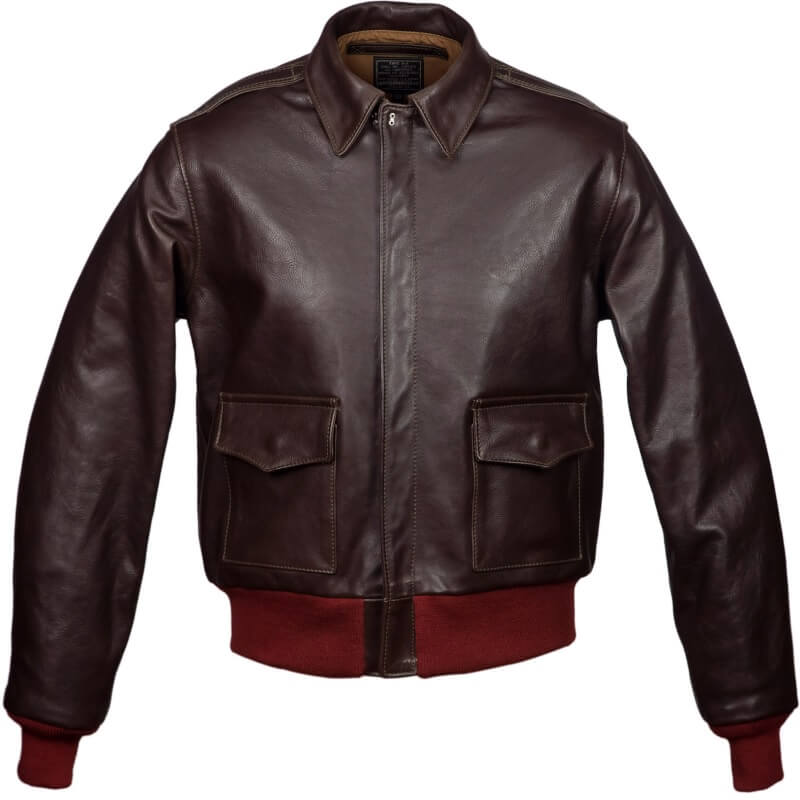What is a bomber jacket?
The bomber jacket is an iconic piece of clothing that has been worn by pilots, military personnel and civilians alike for decades.
But what exactly do we mean by 'bomber jacket'? The original leather bomber jackets were designed specifically for pilots who flew at bombing altitudes during World War II, but since then, 'bomber jacket' has become a loosely-defined umbrella term that's used to describe a wide range of styles made from a variety of materials with varying features - many of which have little relation to the originals.
For this reason, we generally avoid the term 'bomber jacket' and instead talk about specific styles, such as the Type B-3. However, within the industry, 'bomber jacket' generally refers to two styles of jacket in particular:
The Sheepskin Bomber Jacket
The Type B-3 bomber jacket was designed by the US Army Air Corps during World War II. It was intended to keep aircrew warm while flying at high altitudes in unpressurised aircraft, and because it was so effective, this style of jacket became very popular with pilots and crew.

Pictured: USAAF Type B-3 (Contract No. 42-5110-P)
The jacket features a sheepskin outer shell with leather trim and a wool lining. The sheepskin is incredibly warm and provides excellent insulation, while the leather trim adds durability to the jacket.
The RAF Irvin bomber jacket, also known as the 'sheepskin jacket', was designed for the Royal Air Force (RAF) during World War II. The jacket was developed by Leslie Irvin, a British pilot who had previously designed parachutes for the military. The RAF Irvin bomber jacket is similar to the Type B-3 bomber jacket in that it features a sheepskin outer shell, leather trim, and a wool lining. However, the RAF Irvin jacket has a slightly different design and is tailored for a slimmer fit.

Pictured: RAF Flying Jacket (Battle of Britain)
The RAF Irvin bomber jacket was used by RAF aircrew during World War II and was particularly popular with pilots flying in open-cockpit aircraft. The jacket was extremely warm and provided excellent protection against the cold, wind and rain. In addition to its practical benefits, the RAF Irvin bomber jacket became a symbol of the bravery and courage of RAF personnel during World War II.
Today, both the Type B-3 bomber jacket and the RAF Irvin bomber jacket are popular choices for anyone who wants a warm, durable jacket with a classic, vintage look. While they were designed for use in very different circumstances, both jackets have become iconic symbols of aviation history and are still in demand today. Whether you're a history buff or just looking for a stylish and practical jacket, the Type B-3 bomber jacket and the RAF Irvin bomber jacket are both excellent choices.
The Flight Jacket
In the 1920s, the US Army Air Corps began to develop specialised flight jackets for its pilots. The first flight jacket was the Type A-1, which was made of horsehide leather and was a button-front closure leather jacket. The Type A-1 was soon replaced by the Type A-2, which featured a zipper closure and a wool lining for added warmth.
The Type A-2 flight jacket was introduced in 1931 and quickly became the standard flight jacket for US Army Air Corps pilots. The jacket was made of horsehide leather and featured a snap-down collar, two front pockets, and a zipper closure. The A-2 jacket was also adorned with patches on the front and back, indicating the pilot's rank and unit.

Pictured: USAAF Type A-2 (Aero Contract No. 42-15142-P)
The A-2 jacket was designed to provide protection against cold temperatures, wind and rain. The horsehide leather was durable and could withstand the rigours of flight, while the heavy cotton or wool lining provided insulation and warmth. The snap-down collar and front pockets helped to keep the pilot's neck and hands warm, while the zipper closure kept the jacket snug and secure.
Over the years, flight jackets like the iconic Type A-2 have become synonymous with the term 'bomber jacket'. However, this is technically is a misnomer; while there were some exceptions, A-2 jackets were mostly worn by fighter pilots and other crew. They weren’t often used at bombing altitudes.
Nevertheless, when most people us the phrase 'bomber jacket', they generally have something like the Type A-2 in mind:
- A cropped waist-length design
- Looser arm and shoulder fabric
- Knitted cuff and waistbands
After the War
After the war, manufacturers of the original military 'bomber' jackets found a new market when the jackets proved extremely popular with civilians. Many different versions of (and variations on) the classic bomber jackets have become fashion staples. This can be attributed to a combination of factors.
One reason for the popularity of bomber jackets was their practicality. The jackets were warm, durable and functional, and thus a favourite among many workers. Furthermore, the jackets' versatility meant they could be worn by people of all ages and genders, making them a popular choice for everyday wear.
Another reason for the popularity of bomber jackets was their association with the military. After the war, many veterans continued to wear their military-issued bomber jackets, which helped to popularise the style among civilians. Additionally, widespread media coverage of military pilots wearing these jackets helped to further cement their status as a fashionable and iconic garment.
This combination of practicality, versatility, and association with the military made bomber jackets a popular choice for civilians after World War II, and their popularity has continued to this day.
At Aero Leather Clothing, we take pride in having been one of the champions of faithfully reproducing the full range of original iconic RAF and USAAF 'bomber' jackets for decades. Over the years, we have helped thousands of customers to add these classic designs to their collections.
RAF Jackets USAAF Jackets
Browse Similar: Fur Collared Leather Jackets